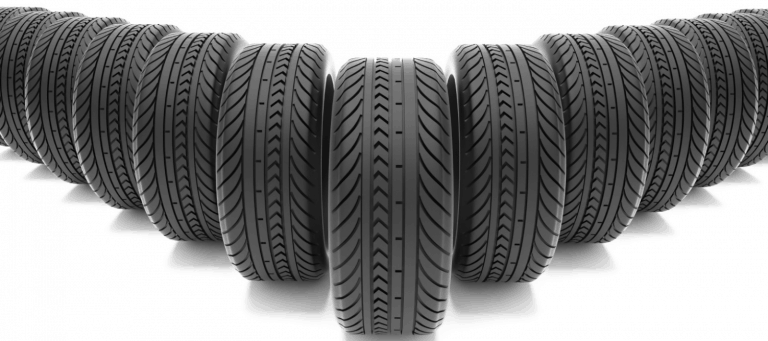Tire Service. Choose the right tires for your vehicle
Understanding what kind of tires you need depends on many factors, such as weather and road conditions you are going to drive in, size of your vehicle, what you use your vehicle for, etc..
It is impossible to predict when tires should be replaced based on their calendar age only. The older is the tire the greater is the chance that it will need to be replaced.

- New Tire Selection
- Flat Repair
- Tire Inspection
- Tire Rotation
- Tire Balancing
- Rim replacement
In most of states it’s illegal to use tires that have worn down 2/32 of remaining tread dept. To warn drivers about that some tires have indicators into wear bars. When these bars become visibly flush with the adjacent ribs the tire has no more than 2/32″ of tread remaining. Another way to check your tire tread depth is the penny test. Insert a penny into your tire’s tread groove with Lincoln’s head upside down facing you. If you can see all of Lincoln’s head, your tread depth is less than 2/32 inch.
Weather conditions:
In rainy and wet conditions you need to change your tires when they reach about 4/32″ of remaining tread depth. You need enough tread depth to allow rain to escape through the tire’s grooves so you can avoid hydroplaning. Place a quarter into several tread grooves across the tire. If part of Washington’s head is always covered by the tread, you have more than 4/32″ of tread depth remaining.
If snow-covered roads are a concern, you should consider replacing your tires when they reach approximately 6/32″ of remaining tread. You need more tread depth in snow because your tires need to compress the snow in their grooves and release it as they roll. That’s why winter tires usually have deeper tread depths than typical all-season or summer tires. Place a penny into several tread grooves across the tire. If the top of the Lincoln Memorial is covered by the tread, you have more than 6/32″ of tread depth remaining.
Speed ratings:
There are some factors you need to pay attention to, if you’re going to get new tires? One of them is the speed rating. Tires are speed rated from 31 to 186 miles per hour. The most common speed ratings are T (118 miles per hour) and H (130 miles per hour). We recommend to replace your tires with ones that have the same or higher speed rating. It can be unsafe to achieve the speeds the vehicle was designed for, if you choose tires with lower speed rating. You can improve your vehicles performance with a higher speed rated tires. On the other hand for a street car a V-rated tire will be enough, unless the car will actually go faster than 150 mph. The higher the speed rating, the better the grip and stopping power, but the lower the tread life. We certainly don’t recommend it, but if tires of different speed ratings are mounted on a vehicle, the lower speed-rated tires should be placed on the front axle regardless of which axle is driven.
Load Index:
Another important factor in choosing a replacement tire is the load index. The higher the tire’s load index number, the greater its load carrying capacity. When selecting replacement tires, drivers must be careful not to select a tire with a lower load-carrying capacity.
Driving Conditions:
If you’re driving in a certain weather conditions, it’s best to use a tire made for that season, of course. For example summer tires in the summer, winter tires in the winter. The main benefits of summer tires are dry handling and traction. These tires are not recommended for driving in cold temperatures or on snow or ice. If the winter temperatures are regularly below 40-45 degree F, you should get winter tires. These tires are perfect for drivers who may drive in such conditions, as snow, ice, slush, rain, and freezing rain. All-season tires handle a variety of road conditions – dry roads, wet roads, and in many cases light snow. Comparing with all-season tires winter tires use special rubber compounds that stay pliable in the cold, giving them better grip and improved braking, even in extreme conditions.
To extend the life of your tires obey speed limits, avoid sudden starts, turns and stops, avoid rubbing against curbs when parking, load your car with caution.
Also we highly recommend to have spare tire (many modern cars don’t have it) in case if have a flat tire in the middle of nowhere.
However, even if you’re not sure what type of tires you need, our specialists will guide you to get the right tires for your vehicle.














